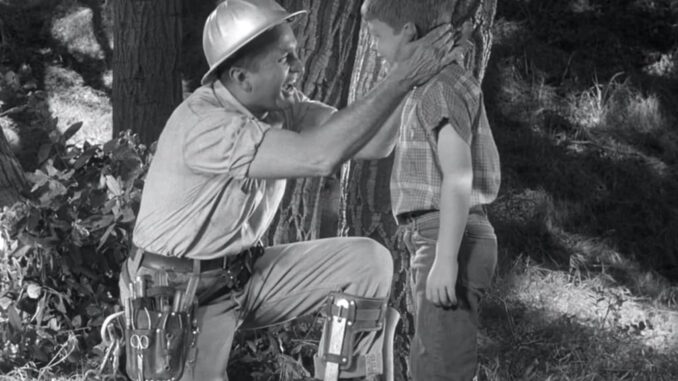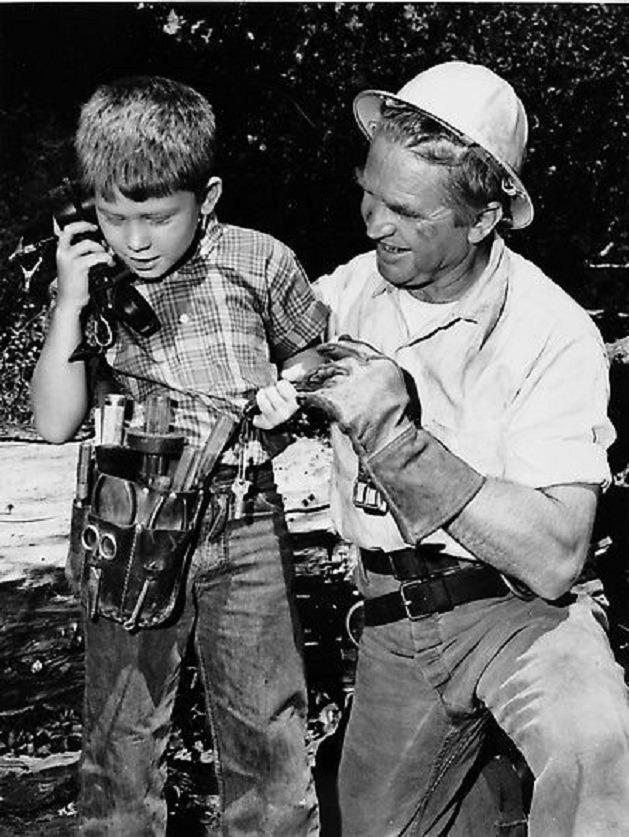
Introduction: Why Mr. McBeevee Still Echoes Through TV History
If you’ve ever doubted whether a black-and-white sitcom from the early 1960s could pack a punch, The Andy Griffith Show’s episode “Mr. McBeevee” will make you think again. It’s not just one of the most memorable episodes in the show’s long run—it’s also one of the most profound, dealing with themes of belief, trust, and parental faith.
In this article, we’re diving deep into the legacy of Mr. McBeevee, exploring what made the episode so powerful, why it continues to resonate with audiences decades later, and how it shaped both the show and classic television at large.
The Setting: Mayberry’s Simple Charm Meets Complex Lessons
Mayberry was a town built on simplicity—apple pie, front porches, and moral lessons that wrapped up neatly in 25 minutes. But “Mr. McBeevee,” which aired in the third season, shattered that mold. It brought complexity into the homes of viewers and introduced an idea far deeper than anything the show had tackled before: believing without seeing.
Plot Breakdown: Who Is Mr. McBeevee?
Little Opie Taylor, played by Ron Howard, returns home one day with wild stories about a man named Mr. McBeevee. According to Opie, this mysterious man wears a silver hat, walks in the trees, jingles when he walks, and can even pull coins from his ears.
Naturally, Andy Taylor, Opie’s father (played by Andy Griffith), is skeptical. To him—and Barney Fife—the description sounds more like a figment of imagination than a real person. The heart of the episode centers around one question: Should Andy believe his son or not?
Andy’s Dilemma: Parenting at Its Most Honest
This wasn’t just another feel-good sitcom storyline. The moment when Andy sits down on the porch and has to decide whether to punish Opie or believe him is one of the most raw and emotionally honest moments in classic TV.
Andy’s decision to believe Opie—not because he’s sure Mr. McBeevee exists, but because he trusts his son—is the true heart of the episode.
Faith in the Face of Doubt: A Timeless Message
The genius of this episode lies in its metaphor. Mr. McBeevee becomes more than just a character—he’s a symbol of the things we can’t explain but sometimes need to believe in anyway. In a way, it’s almost spiritual.
You can call it a parable of faith, trust, and the blurry line between reality and imagination.
Ron Howard’s Standout Performance
Though still a child actor at the time, Ron Howard delivered a performance filled with innocence, sincerity, and emotional depth. His ability to portray Opie’s confusion and disappointment when no one believes him is a big reason the episode hits so hard.
It wasn’t just another “cute Opie moment.” It was a defining moment for the character and for Ron Howard’s budding career.

Mr. McBeevee’s Real Identity
In the end, the audience learns that Mr. McBeevee is indeed real. He’s a telephone lineman—his silver hat is a hardhat, he jingles because of the tools on his belt, and he “walks in the trees” because he climbs telephone poles.
This reveal is important, not because it proves Opie right, but because it validates Andy’s leap of faith.
The Writer Behind the Magic
“Mr. McBeevee” was written by David Adler, a contributor who helped shape many of the show’s most emotionally resonant episodes. His work here reflects an understanding of moral ambiguity—something rare in early ‘60s sitcoms.
Instead of clean answers, Adler gave viewers something better: a reason to think.
Andy Griffith’s Understated Brilliance
Griffith’s performance as Andy was never flashy—but in this episode, it was quietly powerful. His body language, his tone, the long pause before he tells Opie he believes him—it all builds up to a crescendo of emotional release.
Andy didn’t need big speeches to teach a lesson. He just needed a look and a sigh.
Barney Fife’s Comedic Counterbalance
Don Knotts, as always, brought some levity to the emotional tension. His frantic disbelief and insistence that Opie is making it up added both comedy and realism. It also showed how easily adults dismiss the words of children—another undercurrent of the story.
The Episode’s Cultural Impact
“Mr. McBeevee” isn’t just famous among fans—it’s often listed among the greatest TV episodes of all time. Critics have praised it for its balance of sentiment and intelligence, for how it portrays parenting, and for daring to leave questions hanging in the air.
It’s not just television. It’s storytelling at its finest.
A Teaching Tool in Disguise
Many educators and therapists have used “Mr. McBeevee” as a teaching tool. The episode can open doors for discussions about belief, honesty, and listening to children.
It’s a rare case where entertainment becomes education without losing its heart.
Lessons for Parents Today
Even in our modern world filled with smartphones and streaming content, the core message of this episode holds true. Parents are still faced with the same dilemma: Do I trust my child when the facts aren’t adding up?
The answer, as Andy showed us, may not be easy—but it’s essential.
Why the Episode Still Matters in 2025
In an age of misinformation and constant doubt, the Mr. McBeevee episode reminds us of a very basic truth: Sometimes, the right thing to do is simply believe. Not blindly, but with heart.
That idea is as relevant now as it was in 1962.
Unanswered Questions That Keep Fans Talking
Fans still debate whether the reveal at the end was necessary. Some say it would have been even more powerful if Mr. McBeevee remained a mystery—like faith itself. Others love the payoff of seeing Andy’s trust rewarded.
Either way, it’s that tension that keeps people talking about the episode decades later.
Mr. McBeevee’s Lasting Legacy
Though the character only appeared in one episode, Mr. McBeevee became iconic. He’s mentioned in fan circles, parenting blogs, faith-based studies, and screenwriting classes alike.
He’s not just a character—he’s a symbol of belief, trust, and the sometimes magical perspective of a child.
Conclusion: Why ‘Mr. McBeevee’ Will Always Matter
In a show filled with lovable characters and gentle life lessons, “Mr. McBeevee” stands apart. It dares to ask difficult questions without shoving answers down your throat. It challenges viewers—especially parents—to look inward, to question how we respond to uncertainty.
It’s not just about a little boy and an imaginary friend. It’s about faith, parenting, and the quiet power of choosing to believe.
That’s the real legacy of Mr. McBeevee—and why it will never be forgotten.
FAQs
1. Who played Mr. McBeevee in ‘The Andy Griffith Show’?
Mr. McBeevee was played by Karl Swenson, a character actor known for his work on various TV shows and films throughout the 1960s and 1970s.
2. Did Mr. McBeevee ever return in future episodes?
No, Mr. McBeevee only appeared in a single episode. Despite his impact, he was never brought back—a creative choice that likely added to the character’s mystique.
3. What season and episode number is ‘Mr. McBeevee’?
It’s Season 3, Episode 1 of The Andy Griffith Show, and originally aired on October 1, 1962.
4. Why is the Mr. McBeevee episode considered so important?
It tackled themes like trust, faith, and parental intuition in a way that was rare for TV at the time. It’s praised for its emotional depth and moral ambiguity.
5. Is ‘Mr. McBeevee’ based on a true story?
There’s no evidence that it was based on real events, but the situation it portrays—children telling truths that sound unbelievable—is something many parents can relate to.
